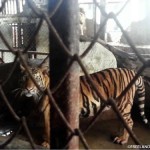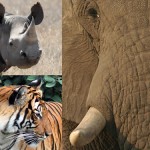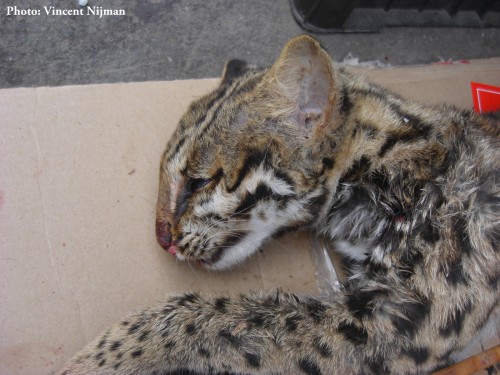
Cambridge, UK, 22nd December 2014: The trade in Tigers and other wild cat parts from Myanmar into China has grown in recent years while the same trade into Thailand has diminished, says a new study that scrutinises two decades of survey data in two border towns.
In Tachilek on the Myanmar-Thailand border, shops selling wild cat parts including Tiger and Leopard skins and skulls, fell from 35 in 2000, to just six in 2013. However in Mong La, at the China border, such shops more than trebled from six in 2006, to 21 in 2014. Mong La caters almost entirely to customers from China.
The two markets are situated on international borders and serve as sources for illegal cross-border trade.
All wild cat species are protected under the Convention on International Trade in Endangered Species of Wild Fauna and Flora (CITES) and by national laws.
Trade in tigers and other wild cats in Mong La and Tachilek, Myanmar – a tale of two border towns, published in Biological Conservation, studied information gathered from 19 separate surveys of wild cat trade in Tachilek between 1991 and 2013 and seven surveys between 2001 and 2014 in Mong La.
Most of the cat parts on sale were claws, skulls, canine teeth and skins. In total, over two thousand wild cat parts, the majority of them skins, were recorded during the surveys.
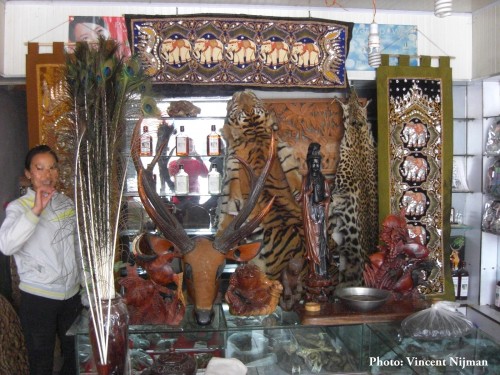
Authors Dr Chris R. Shepherd, Regional Director for TRAFFIC in Southeast Asia, and Dr Vincent Nijman, Professor of Anthropology at Oxford Brookes University, argue that the decrease in Tachilek could be due to greater enforcement action in Thailand while the increase in Mong La may be linked to the rising buying power of China’s consumers, and the apparent ease in smuggling illegal wildlife parts into China from Mong La.
“With little or no enforcement in Tachilek and Mong La, it’s open season for wildlife traffickers,” said Dr Shepherd.
The authors also suggest that the increase in Mong La cat part trade mirrors that of other illicit wildlife products such as ivory, while Tachilek’s customers from Thailand are now mainly interested in buying cheap clothing.
Although the dynamics of the trade in wild cat parts differed in the two border towns, in both Clouded Leopard Neofelis nebulosa parts were the species most often seen in trade. Clouded Leopard parts were observed in all but two of the surveys, representing at least 482 individuals.
Other wild cat species commonly found in trade over the decades included Leopard Cat Prionailurus bengalensis, Leopard Panthera pardus, Tiger Panthera tigris and the Asiatic Golden Cat Catopuma temmincki.
Traders in both towns claimed that Tiger and Leopard products were mainly sourced from Myanmar and India. Previous studies reported that large cat skins and bones on sale in Tachilek also originated from Thailand, Malaysia and Indonesia. Smaller species were said all to be sourced from Myanmar.
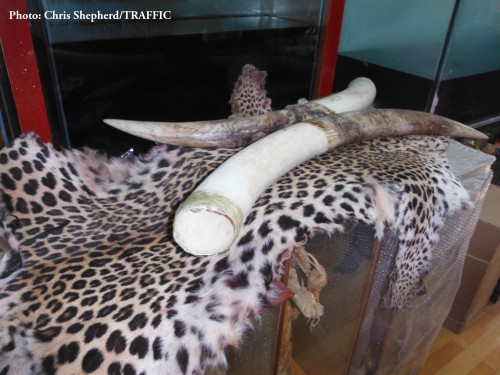
The authors urged more effective enforcement and prosecution of wildlife criminals in Myanmar and called on neighbouring source and consumer countries, especially China, to allocate more resources to ramp up existing efforts to clamp down on illegal wildlife trade.
“It’s time for the relevant enforcement authorities to live up to their international commitments to address wildlife crime,” said Dr Nijman.


![Pangolin Trafficking: 2011 to April 2013 [Infographic]](https://annamiticus.com/wp-content/uploads/2013/04/PangolinsInTrade2011thru2013-150x150.jpg)
